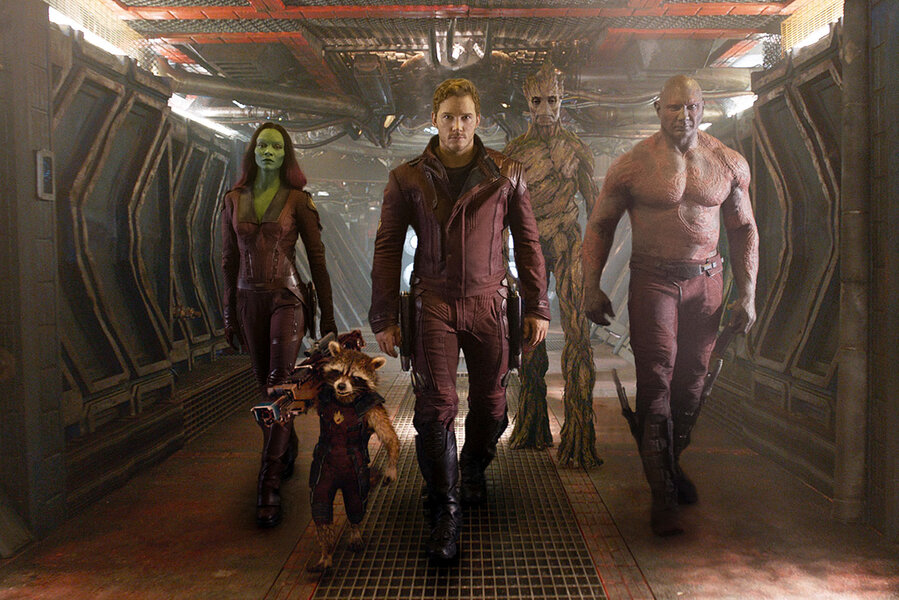NASA taps 'Guardians of the Galaxy' to bring 'notoriety' to space station
Loading...
NASA is recruiting Marvel's "Guardians of the Galaxy" to join the next mission to the International Space Station.
Space heroes Rocket Raccoon and Groot will rocket to the ISS aboard a mission patch, as NASA increasingly weaves characters from space-related films, comics, and television series into its space exploration programs in creative bids to build more public support (and funding) for its programs.
“A major mission for us here at CASIS is to find unique and innovative ways to bring notoriety to the ISS National Laboratory and the research that is being conducted on our orbiting laboratory,” said the director of operations at NASA-contracted CASIS Ken Shields said in a statement. “There are very few brands in the world who have as large an impact as Marvel, and we are thrilled to partner with them on this project and look forward to Rocket and Groot inspiring a new generation of researchers interested in the space station.”
CASIS, the Center for the Advancement of Science in Space, announced the new patch at Comic Con in San Diego, Calif. From their place on the patch, Rocket Raccoon and Groot will travel with all the payloads to the International Space Station.
"These are characters who have a bit of a space-based background to begin with, so both already embody some of the characteristics associated with what is happening on the space station," Patrick O'Neill, the marketing and communications manager for CASIS, said in a video interview. "It is exciting for us because this is hopefully the beginning of something that goes beyond just the mission patch."
The partnership will go beyond the patch later this year, as the astronauts on the ISS will conduct a research project – details unannounced as yet – involving the characters as part of a science education project.
Although the Marvel-inspired patch is part of CASIS, a nonprofit contracted by the government to organize experiments on board the ISS, NASA itself has increasingly sought public support in the form of film cameos and pop culture partnerships.
NASA's government support – and funding – has wobbled in recent years, with the decision to transport American astronauts to the ISS on Russian rockets, for example, serving as a potent question mark to the US commitment to space exploration. NASA has evidently decided that it can launch the race to popularize space. These scientists are gleaning public attention from a spate of space-related cultural fixtures including everything from the movies "Gravity" and "Interstellar" to figures by LEGO, The Washington Post noted.
Grassroots support for space exploration can mean more funding for far-reaching projects at NASA, so the public relations work is becoming more sophisticated. The agency partnered with creators of the 2015 film "The Martian" to make the movie more realistic, Space.com reported. NASA spent months before and after the release highlighting its own goal of reaching Mars for real.
NASA also launched a public relations campaign to highlight "Star Wars: The Force Awakens" in December 2015. "We actually do have the droids you’re looking for," NASA wrote, before describing a list of "Star Wars" technology that the space agency has created since 1977.
And when "Star Wars: Beyond" was released in theaters this past Friday, NASA celebrated 50 years of Star Trek with a press release chock-full of sci-fi references and real-life space photos from the Hubble telescope.
"When 'Star Trek' was first broadcast in 1966, the largest telescopes on Earth could only see about halfway across the universe – the rest was uncharted territory," NASA wrote in a press release. "But Hubble's powerful vision has carried us into the true 'final frontier.'"








